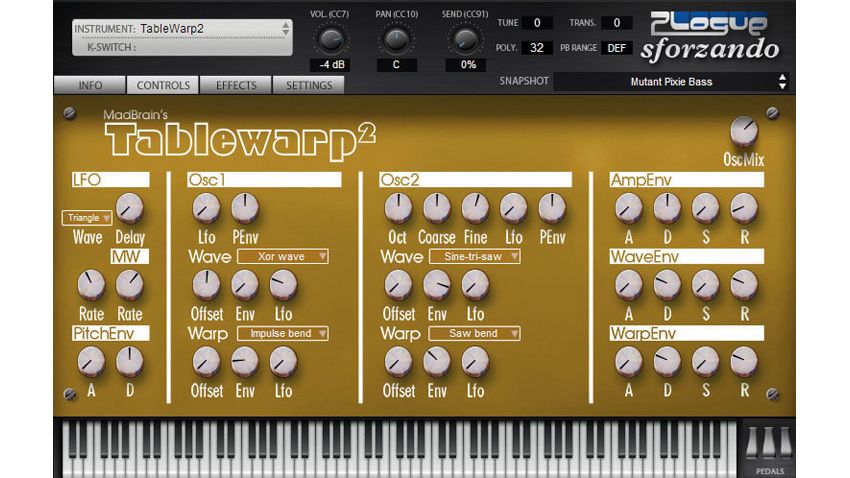

The combined synthesised/physical modelling response is available six times across any sound via one Root Note and two Harmonizer modules per layer.

So far, that explains one of Noisy’s resonators, but there are three for each sound layer and two sound layers in total.

Each assignment also offers independent Rise and Fall sliders, letting you exaggerate the default envelope shape to extend attack and decay behaviours. As you’d hope, these disruptors can work interdependently, so if you want the envelope to control how widely the LFO will wobble, use the Expression Amount in the LFO. The LFO works similarly choose from one of five shapes and then decide where to assign modulation. This control is easy to identify in other areas of the plug-in – just look for the purple. Turning the Exp Amt dial in any of the modules will introduce the envelope’s behaviour. The master Expressive Control dial then selects how deeply this envelope will impact Noisy’s parameters. The envelope dial controls expression strength. It’s far more exciting to get your sounds moving with the top-row Expression and LFO modules, which are the main disruptors-in-chief.Įxpression (top left in purple) provides a basic envelope shape with attack and decay times, and an option to link the envelope’s behaviour to velocity. However, moving the dot manually is rather mundane. You can then explore the combined harmonic potential of your Osc Reso and Comb Reso choices by moving the yellow dot around the virtual X/Y pad to the left. For the latter, the Comb Reso dial moves between odd and even harmonics, mimicking the behaviour of purer, harp-like sounds to the left and richer, guitar-like ones to the right. On its right-hand side, you’ll see a vertical slider with the synthesised ‘Osc’ at the top and the physical modelling behaviour controlled via a ‘Comb’ filter as labelled at the bottom. To understand this better, look at the yellow ‘Root’ resonator in the bottom left-hand corner. This means that each one can either behave like an acoustic string or more like a regular synthesised oscillator waveform.īetter yet, you can blend between subtractive and physical modelling engines with a crossfader to produce surprising and unique hybrid sounds. Your chosen impulse then triggers three resonators, each of which features independent synthesis and physical modelling engines.

There are four flavours of noise available to perform this task – velvet noise, pink noise, white noise and blue noise. Think of this as a full-frequency sonic gesture that sets Noisy’s ‘virtual string’ into motion. It kept crashing when scanning for my compatible plugins, and there’s this annoying bug where it gives you a confirmation dialog every time you switch presets because it thinks you modified something–I did find a setting to turn off that confirmation dialog though, which tells me I’m not the only one to have run into it! And the Monark presets aren’t working for some reason… so I think it’ll take a bit of digging to make the most of the software, like I said, but it’s been very fun to play with so far.The impulse trigger in Noisy is a noise generator.
Expressive e touche review software#
The only con I have so far is that the Lié software is kind of buggy. I can already tell there’s a significant learning curve, but I think it’ll make it more fun to add extra “human touches” to my electronic instruments, rather than writing automation with my mouse or something.
Expressive e touche review how to#
I’m still figuring out how to make the most of the software, and how I might be able to make my own presets with different software instruments and maybe just for writing automation with plugins. The presets that come with the Lié software are fun to play around with.


 0 kommentar(er)
0 kommentar(er)
